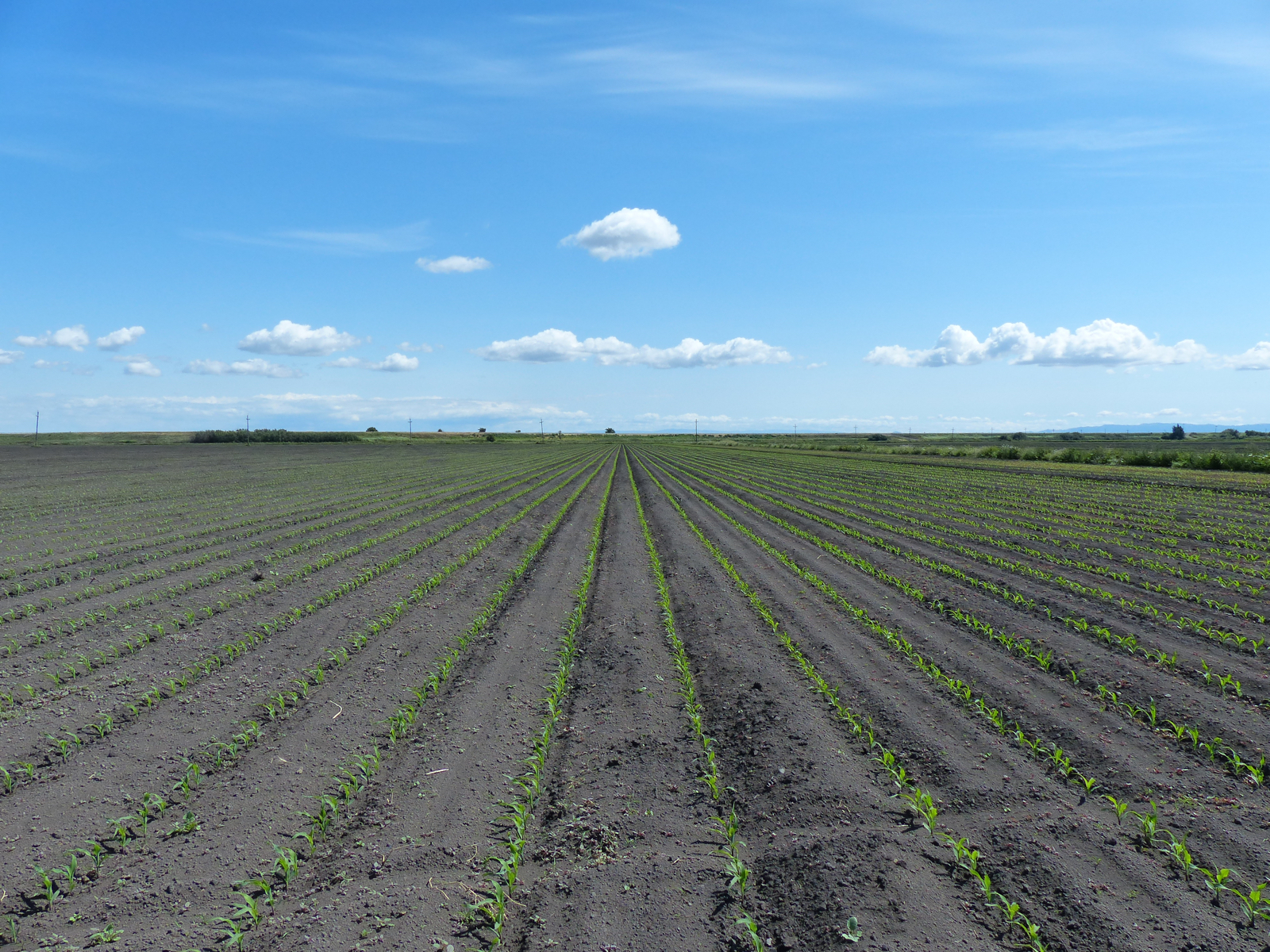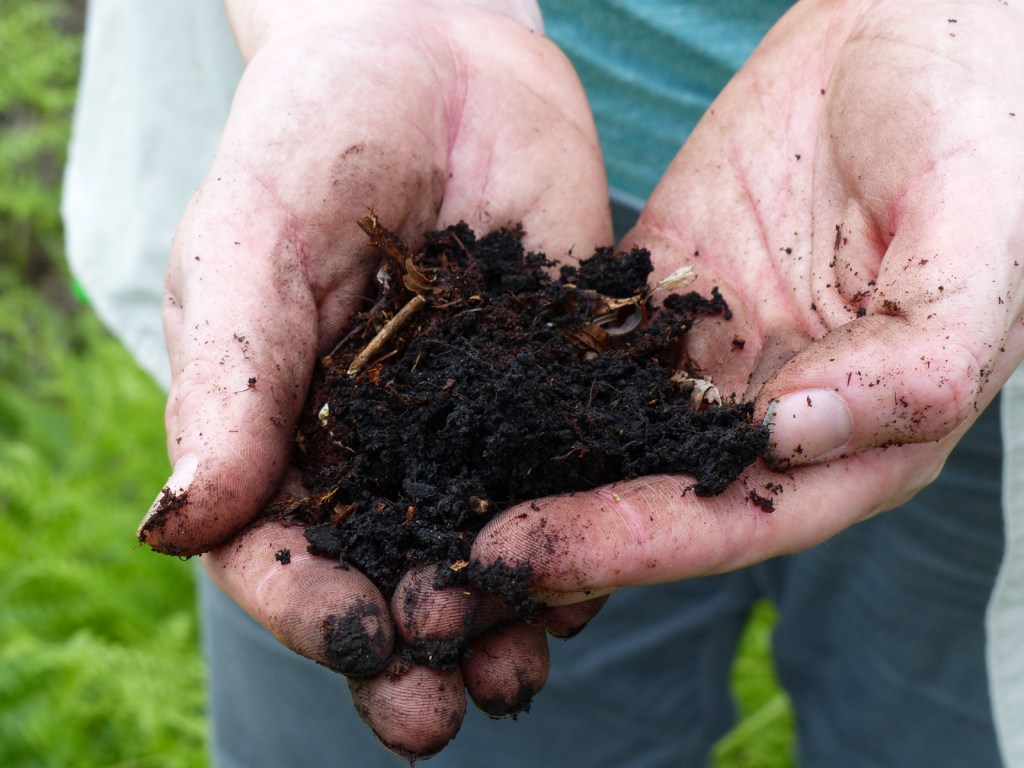Soils have twice as much carbon as the atmosphere. Which means there’s a lot of interest in figuring out if soil can hold even more carbon—to help fight climate change.
Sequestering carbon in soil is like saving money in your bank account—simple in theory, but challenging in practice. If you’re frugal enough you may end up fighting climate change. Spend too much and you could make the situation worse.
Carbon is deposited into the soil in a few steps. First, plants convert carbon dioxide into types of carbon that are used to build cells. Plant carbon then ends up in soil when plants die or release carbon through their roots. Soil microbes—bacteria and fungi—turn this carbon into forms that can be locked away by magnet-like soil particles that can bind certain forms of carbon for decades to millennia.
But microbes also carry out withdrawals when they use carbon for energy, respiring some to the atmosphere and returning some to the vault when their cells die. Since the amount of carbon held in soil is a balance of deposits and withdrawals, building up soil carbon requires both adding it to the soil and reducing its loss to the atmosphere.
The Soil Carbon Equation
To limit global warming to 2 degrees celsius, we will need to limit emissions to no more than 565 billion metric tonnes (gigatons) of carbon dioxide. Because carbon dioxide isn’t all carbon, that comes to about 100 gigatons of carbon. Soils currently contain 15 times that much carbon. And that carbon can easily be lost, which means that soils can easily worsen the climate change problem.
Up to half of soil carbon can be lost when humans convert ecosystems—from, say, forest to agriculture. Because soils currently contain twice as much carbon as the atmosphere, extensive conversion of ecosystems could lead to drastic increases in the amount of carbon dioxide. Keeping soil carbon below ground by halting land conversion is potentially the most important way to use soils to avoid climate change.
In addition to avoiding losses, soils can build up—or sequester—more carbon. But the analogy to a bank account is not perfect, and this is where it breaks down.
If you add to your bank account without spending, you can continue to build up your assets. Soils, however, can only hold a certain amount of carbon, which is limited by the physical properties of the soil, such as the amount and type of clay minerals that are present.
Like a Glass Holding Water
Clays have a strong capacity to bind carbon—the more clay the more carbon soils can hold. In this sense, a soil’s ability to sequester carbon is less like a bank account and more like a glass holding water: you can add as much water to the glass as you like, but you can only hold onto the volume of water that matches the physical size of the glass.
Soils also differ in their sequestration potential because some glasses are emptier than others. Soils with low levels of carbon have more to gain than soils that are closer to their physical holding capacity. Because of this, restoring degraded lands—lands that have lost large amounts of carbon—should be priorities for building up carbon.
How much carbon can be sequestered in soils depends on what we’re willing to do with our land.
These could be lands such as row crop agriculture that have had their carbon spent by the use of techniques—like intense plowing—that promote microbial access to, and use of, carbon. In addition to sequestering carbon from the atmosphere, building up soil carbon on degraded lands can also help restore the fertility of those soils.
Soil carbon helps create a healthy physical structure for plants to grow, it holds onto water so soils don’t dry out as quickly, and it comes in organic forms that contain other nutrients that are important for plant growth. Restoring soil fertility may even be the most important benefit of soil organic matter.
How much carbon can be sequestered in soils depends on what we’re willing to do with our land.

On the one hand, we could restore all agricultural land to its native ecosystem. Over time, this would come close to building up all of the carbon that was lost due to conversion. But it’s an unrealistic—and undesirable—scenario because we need to maintain working lands for food, income, and other benefits people get out of managing the land.
Short of restoring all land, farmers can implement agronomic practices, like cover cropping and crop rotation, that improve the health of the soil. These practices do build up less carbon than complete restoration, but are big improvements on agronomic practices that do not return much carbon to the soil.
By managing soils well, we can avoid losing more carbon to the atmosphere and even build up soil carbon (with the added benefit of local site fertility). But soils will never be able to store all of the excess carbon in the atmosphere. Like a glass holding water, soils can only contain as much carbon as their physical limits will allow. By burning fossil fuels from deep in the Earth we’ve dramatically increased the amount of carbon that needs to be held. That carbon will continue to spill into the atmosphere, faster than we can mop it up, until we turn off the faucet.
Stephen Wood is a NatureNet Science Fellow at Yale University and The Nature Conservancy. He is studying soils from Conservancy sites in North America and Africa to determine how much soil carbon can be built up by the Conservancy on working lands.




I would like to know if soils are being tested for nano particulates of aluminum, barium, strontium, and lead…to see if the amounts of these in agricultural and forest soils has increased significantly in the last 10 years. What has been measured in California is alarming…and it’s source….may be coming from the air. There are patents registered for chemicals and metals to be used in aerosol spraying…widely…globally…in weather engineering experiments and ongoing practices. To learn more about the research, data, related problems, and concerns regarding the now contaminated rain, water, soil, and plant and animal life with water soluble aluminum systemic now in the environment, go to geoengineeringwatch.org. It seems discouraging, but if we cannot stop this widespread spraying of toxics from the air, whatever efforts we make here on the ground seem futile. I would like to know what your assessment of this issue is.
Gratefully, Carol Hart
I have always been an avid compost and companion plant gardener. Now I have a basis for continuing this practice but with more informed practices…….I rotate crops but I just have a tiny back yard garden, with a beautiful huge maple tree that gives me the gifts of mulch and compost. I will continue to compost garden, with a line to carbon maintenance appropriate to my needs. I will keep reading on this as global warming, the use of fossil fuels and deforestation are subject very dear to my heart and if I can make a small contribution, I would be so glad to do so.
Very interesting Steve!